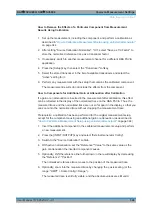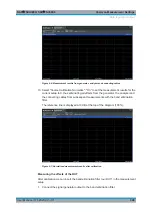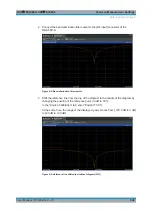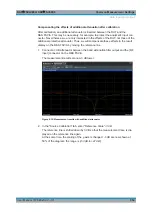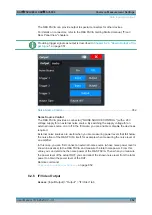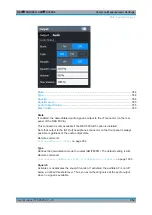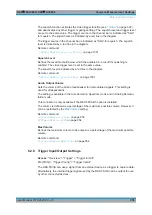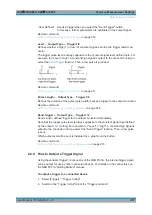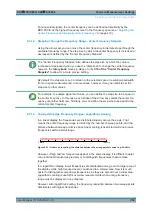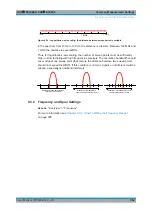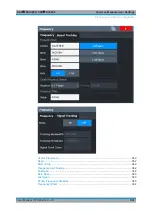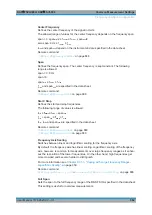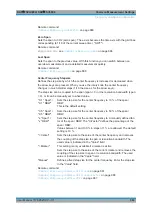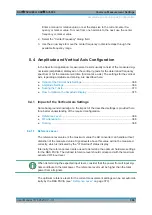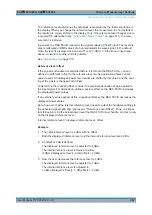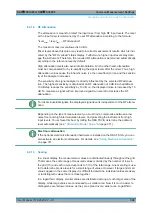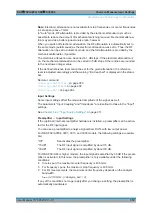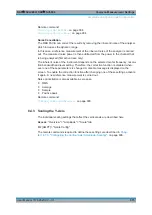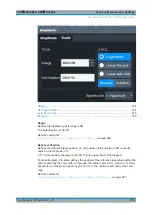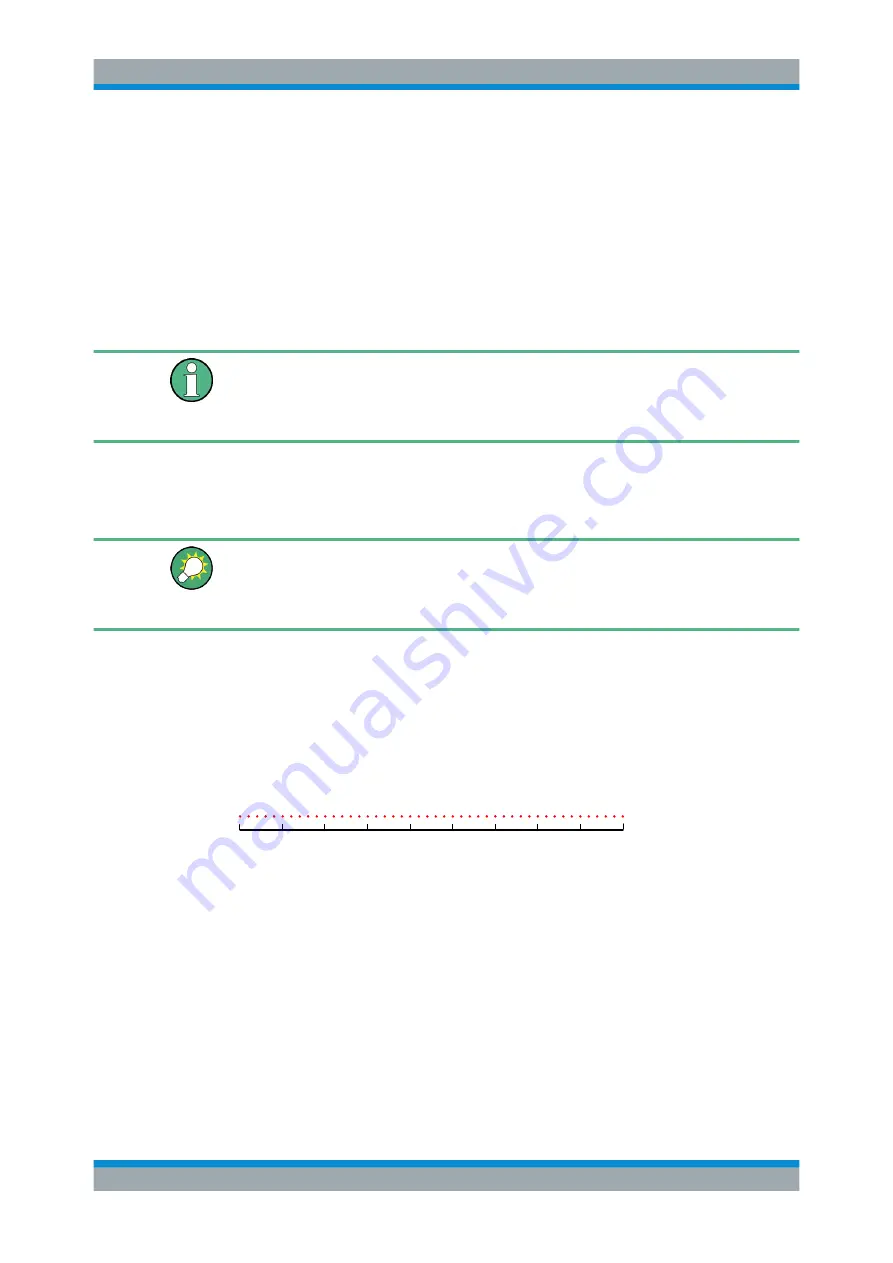
Common Measurement Settings
R&S
®
FSVA3000/ R&S
®
FSV3000
359
User Manual 1178.8520.02 ─ 01
For sinusoidal signals, the center frequency can be defined automatically by the
R&S
FSV/A as the highest frequency level in the frequency span (see
Center Frequency Automatically ( Auto Frequency )"
8.3.1.2
Stepping Through the Frequency Range - Center Frequency Stepsize
Using the arrow keys you can move the center frequency in discrete steps through the
available frequency range. The step size by which the center frequency is increased or
decreased is defined by the "Center Frequency Stepsize" .
The "Center Frequency Stepsize" also defines the step size by which the value is
increased or decreased when you use the rotary knob to change the center frequency;
however, the
rotary knob
moves in steps of only
1/10 of the "Center Frequency
Stepsize"
to allow for a more precise setting.
By default, the step size is set in relation to the selected span or resolution bandwidth
(for zero span measurements). In some cases, however, it may be useful to set the
step size to other values.
For example, to analyze signal harmonics, you can define the step size to be equal to
the center frequency. In this case, each stroke of the arrow key selects the center fre-
quency of another harmonic. Similarly, you can define the step size to be equal to the
current marker frequency.
8.3.1.3
Coping with Large Frequency Ranges - Logarithmic Scaling
In a linear display, the frequencies are distributed linearly across the x-axis. That
means the entire frequency range is divided by the number of sweep points, and the
distance between sweep points is equal. Linear scaling is useful to determine precise
frequencies within a small range.
1 MHz
10 MHz
Figure 8-13: Linear x-axis scaling: the distance between the sweep points is equal, e.g. 200
kHz
However, if high and low frequencies appear in the same display, it is difficult to deter-
mine individual frequencies precisely or to distinguish frequencies that are close
together.
In a logarithmic display, lower frequencies are distributed among a much larger area of
the display, while high frequencies are condensed to a smaller area. Now it is much
easier to distinguish several lower frequencies, as they are spread over a wider area.
Logarithmic scaling is useful for overview measurements when a large frequency
range must be displayed in one diagram.
However, with logarithmic scaling, the frequency resolution between two sweep points
deteriorates with higher frequencies.
Frequency and Span Configuration


